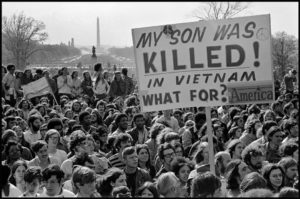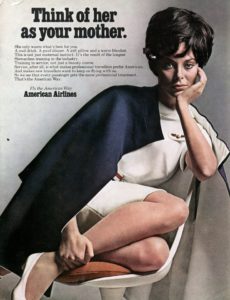db Education Packet by Jessica Dart, CoHo Artistic Fellow and Dramaturg
Reserve your tickets to the world premiere of db by Tommy Smith at CoHo January 13 – February 4.
dbThe Time Period – 1971
 “When Cooper jumped in the fall of 1971, the nation was at war with itself. In government buildings and on college campuses, bombs went off. In cities, looters roamed as riots raged and buildings burned. At demonstrations against the war in Vietnam, protesters were arrested by the tens of thousands. A defeat in Vietnam was imminent. The nation was also mired in recession. Labor strikes crippled the workforce. Unemployment soared. So did the crime rate. Prisons were overcrowded and taken over in riots. Communes were built. Cults formed. Otherwise normal teenagers ran away from home, and had to be ‘deprogrammed’ after they were brainwashed… The underground was rising. Terrorists were homegrown. Communist fears were reborn.” – from SKYJACK by Geoffrey Gray
“When Cooper jumped in the fall of 1971, the nation was at war with itself. In government buildings and on college campuses, bombs went off. In cities, looters roamed as riots raged and buildings burned. At demonstrations against the war in Vietnam, protesters were arrested by the tens of thousands. A defeat in Vietnam was imminent. The nation was also mired in recession. Labor strikes crippled the workforce. Unemployment soared. So did the crime rate. Prisons were overcrowded and taken over in riots. Communes were built. Cults formed. Otherwise normal teenagers ran away from home, and had to be ‘deprogrammed’ after they were brainwashed… The underground was rising. Terrorists were homegrown. Communist fears were reborn.” – from SKYJACK by Geoffrey Gray
“There is such a feeling of powerlessness in this country. We all have the feeling that we want to complain to the manager, but the manager is invisible. Nobody knows who he is and where to find him.” – John Gardner, former Secretary of Health, Education, and Welfare (1971)
- America in the 1970s: Photographs from the Pacific Northwest
- Nixon made some major changes in economic policy that would have far reaching impact for the US
- Portland in 1971
- 1971 Billboard Hot 100 (The Theme from Shaft was #1 the week DB Cooper hijacked Flight 305)
- Skyjacked: The Strange History of Plane Hijackings in America
Air Travel in the 1970s: Stewardesses, Hijackings, Advertising
- Airport security was lax in 1971, allowing Cooper to purchase a ticket without identification. Electronic records of airline ticket purchases were not kept.
- Between 1963 and 1971, 160 planes were hijacked in American airspace.
- Airline travel was still considered glamorous and comfortable. Passengers
 were allowed to smoke onboard, luxurious meals were served, and flight attendants were still known as “stewardesses.”
were allowed to smoke onboard, luxurious meals were served, and flight attendants were still known as “stewardesses.” - Becoming a stewardess was a highly competitive process.
- Stewardesses were portrayed as both mother and sex kitten in order to appeal to the largely male airline travelers.

- Stewardesses were taught to bend at the knees when kneeling to serve or talk to seated passengers. This prevented the stewardess from bumping another passenger with her rear end, and prevented unwanted gropes from male passengers.
 “But if many were called (to be stewardesses), few were chosen: in 1958, the dawn of the jet age, only 3 to 5 of every 100 aspiring stewardesses got the job; nine years later, TWA boasted that it hired fewer than 3 percent of its applicants—meaning it was easier for the class of 2006 to get into Harvard this year (the college’s acceptance rate was 10.5 percent) than it was to serve martinis over the Atlantic during the Johnson administration.”
“But if many were called (to be stewardesses), few were chosen: in 1958, the dawn of the jet age, only 3 to 5 of every 100 aspiring stewardesses got the job; nine years later, TWA boasted that it hired fewer than 3 percent of its applicants—meaning it was easier for the class of 2006 to get into Harvard this year (the college’s acceptance rate was 10.5 percent) than it was to serve martinis over the Atlantic during the Johnson administration.”

